
Zoo InternQuest is a seven-week career exploration program for San Diego County high school juniors and seniors. Students have the unique opportunity to meet professionals working for the San Diego Zoo Wildlife Alliance, to learn about their jobs, and then blog about their experience online. Follow their adventures here on the Zoo’s website!

There are many different jobs dedicated to the well-being of animals. This week, the interns had an inside look of what it is like to be a Neonatal Assisted Care Specialist by meeting with Mrs. Zabrina Bohy. The interns were able to learn first-hand what goes into being a part of the Neonatal Assisted Care Unit (NACU) by making formula for a lesser kudu and witnessing a lesser kudu being bottle-fed. In addition to those unique experiences, Mrs. Bohy shared fascinating stories of the "kids" she has cared for during her time in the NACU.

Before she was a Neonatal Assisted Care Specialist, Mrs. Bohy had earned a degree in political science. After realizing she wasn’t fulfilled with the political science path, she looked at the other aspects of her life for inspiration. She spoke to her husband and he noted, “you always seem happier when you're volunteering with animals.” At the time, Mrs. Bohy had been volunteering her free hours with wildlife organizations like Project Wildlife, Lions, Tigers, & Bears, and the Julian Wolf Center, where she cleaned habitats, fed the animals and helped educate others. After realizing that she’d be happier working with wildlife, she took a leap of courage and went back to school. Mrs. Bohy attended Moorpark College and graduated with a degree in exotic animal training and management in 2008.
She started her career at the San Diego Zoo working in the Education Department, and stayed there for two years. She eventually found herself wanting to get more hands-on with the animals and worked in the Children’s Zoo for about 10 more years gaining experience with a plethora of wildlife ambassadors. Finally, she landed her position with the NACU as a care specialist, a highly specialized and full-time career. She’s now happily raising and rehabilitating mammals of all species to hopefully rejoin their families or become wildlife ambassadors.
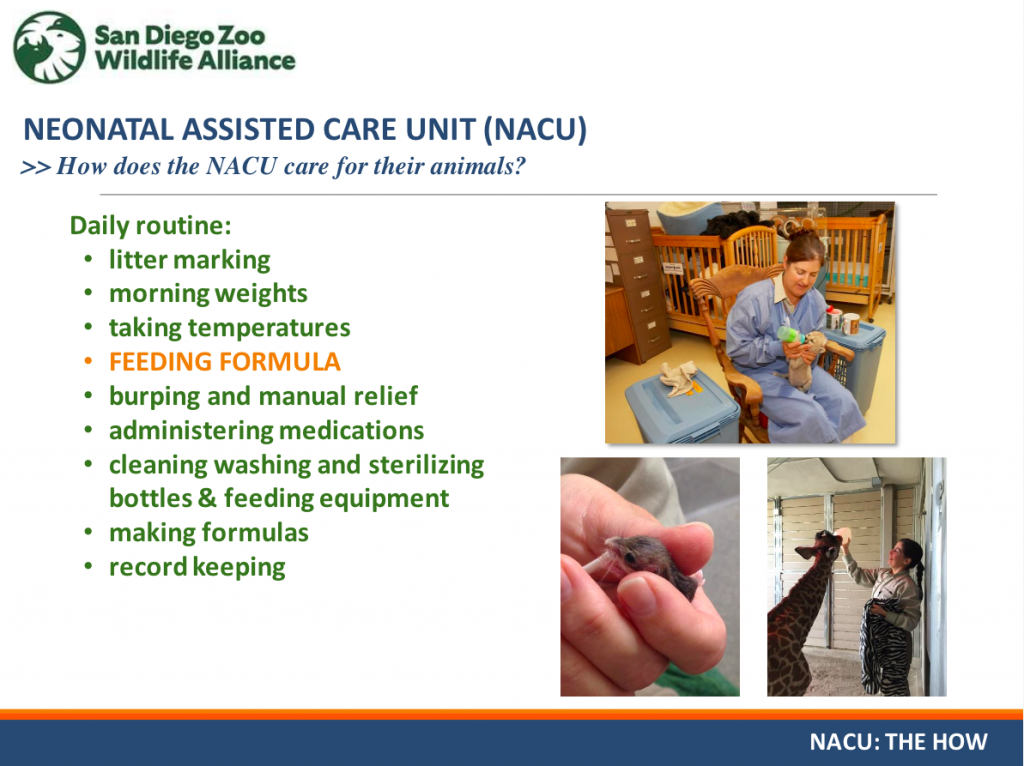
Many of Mrs. Bohy’s responsibilities in the NACU are similar to that of a nurse working in the Newborn Intensive Care Unit (NICU) of a hospital. While “nobody does it better than mom,” Mrs. Bohy’s department is responsible for taking care of any animal that suffers from injury, infection, maternal neglect, maternal death, or a mother with inadequate amounts of milk. Whenever a mother cannot or will not raise a newborn, the Zoo makes it their mission to get the animal to a healthy state and reintroduce it to its family. Mrs. Bohy is on call 24/7, considering she never knows when babies will be born, their condition, or their mother’s condition. Though the time commitment can be a tremendous sacrifice, Mrs. Bohy claims nothing can compare to the happiness of nurturing an animal back to health and seeing it explore happily and freely.

As she described her career and what it entails, Mrs. Bohy shared both the ups and downs of working as a Neonatal Assisted Care Specialist at the San Diego Zoo. Working “graveyard shifts” (sometimes staying until 6 AM!), emotional rollercoasters, and precise, advanced medical knowledge and application are all a part of her taxing job. Mrs. Bohy finds giving shots to be the most difficult of the various tasks and challenges she faces, due to the many measures required to safely go about it. To administer an injection, the staff takes necessary precautions to make the animal feel as comfortable as possible, whether it be nursing it with a bottle, covering it snugly with blankets, or providing a heat mat to lie on.
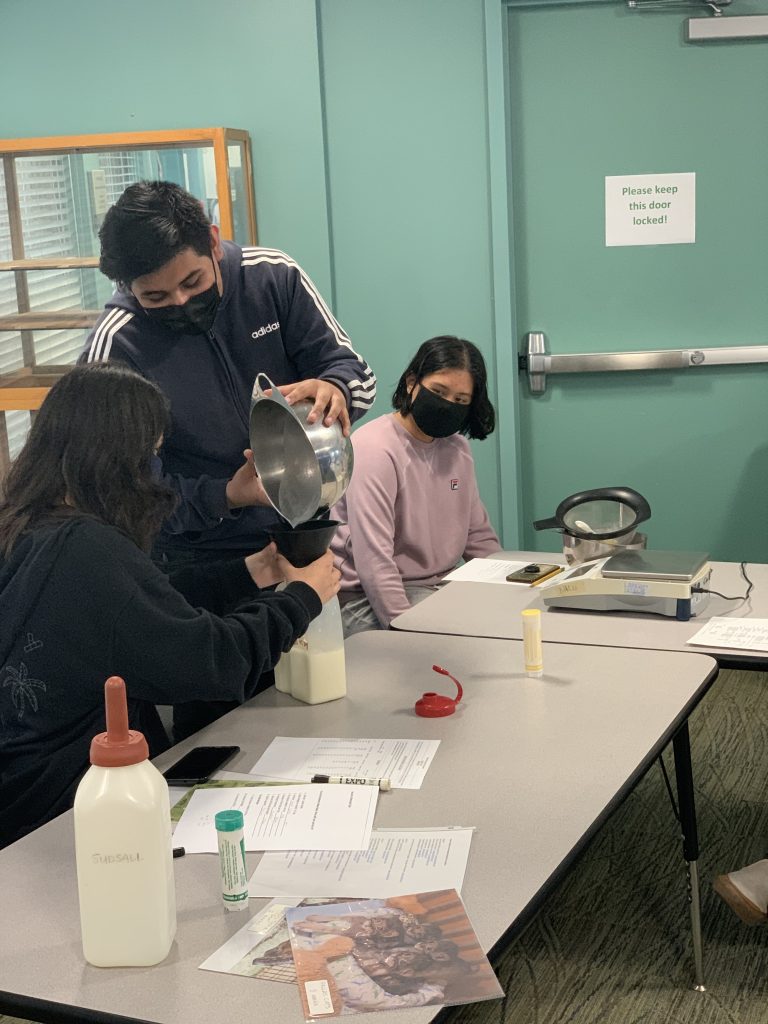
Even with the various trials Mrs. Bohy faces, she finds it all to be worth it in the end. She recalled a time when she went to bottle-feed a baby kudu who was in her care, watching it gleefully run towards her with an excited trot. It was then when the world seemed to stop. She was just so touched by how happy the little kudu seemed, touched by the success of its recovery, and touched from the bottom of her heart that she was able to help this ball of sunshine live a normal life. It is times like these, these moments of pure bliss, which make this job so fulfilling. After all, who wouldn’t be happy to watch a baby animal grow big and strong in front of their eyes?
Mrs. Bohy has worked with many species, including various species of hoofstock. One of these species includes the lesser kudu. The lesser kudu is a large species of antelope native to northeastern Africa, living in mainly shrublands and woodlands. They aren’t as social as other antelope, typically living in small groups of two to three females and their young. Despite their size, kudu are quite graceful and are able to cover up to 30 feet in a single bound! There isn’t a fixed breeding season for the kudu so births take place all year. Gestation lasts for about seven or eight months, at the end of which the mother will give birth to a single calf. Baby kudu weigh around 8.8 to 16.5 pounds. The foal will stay with its mother for around a year-and-a-half.
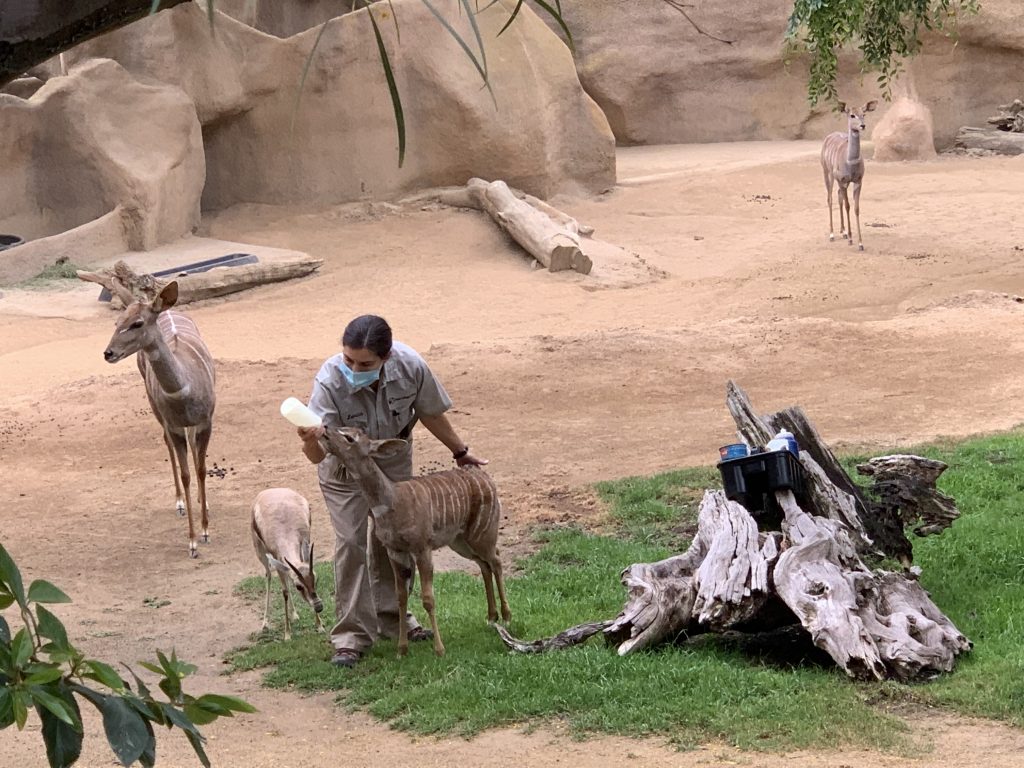
Lesser kudu are listed as “near threatened” by the International Union for Conservation of Nature. Their natural shyness and tendency to hide in thick brush protects them from poachers. However a large point of concern lies in their susceptibility to a viral disease that has cut their population by up to 60%. Luckily, the kudu populations have recovered and are thriving in some protected areas. Mrs. Bohy’s job supports the Zoo’s conservation breeding program, which provides a sort of genetic safety net to ensure that lesser kudu are genetically varied.
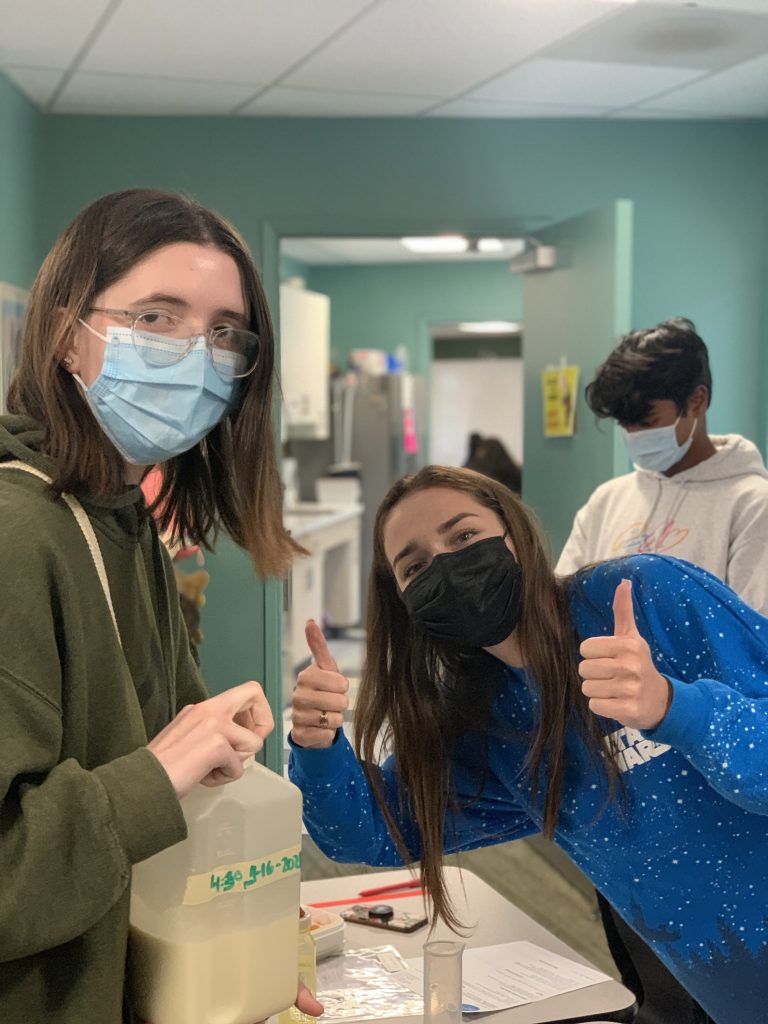
The San Diego Zoo’s dedication to conservation is apparent in every position held by the employees, including Mrs. Bohy’s. She has the incredible job of helping wildlife populations grow and flourish by nurturing neonatal individuals into healthy adults. Through ensuring the mammalian wildlife she cares for has the best chance at life possible, she actively increases the total populations of their species, as well as their genetic diversity. Genetic diversity is a key factor in the stability of a species as it provides variation between the individuals so the population as a whole can more easily adapt to new threats. An increased stability means that the species has a higher chance of thriving and growing in number. This is especially important with endangered species like the Speke's gazelle, whose population is decreasing at a worrying pace. Mrs. Bohy helps with the breeding programs at the Zoo for this species and many others, ensuring their success by caring for any newborn mammals who need a helping hand. She even helps other zoos with their breeding programs by participating in an exchange of information between different NACUs about the care of a variety of neonates to ensure that wildlife across the globe have every opportunity to grow up strong and healthy.
Interested in a job like Mrs. Bohy’s? Well, one of the first things she advised the interns is that her job requires lots of sacrifices and can be emotionally taxing, as “every day is not cute and cuddly.” Caring for wildlife is a great and constant responsibility. Her shifts are unpredictable and anyone working in the field of neonatal care must always be on standby. In her occupation, utmost care and attention to detail is what makes the difference between life and death. For example, when nursing neonates, nipple shape, duct size (the nipple hole size), and the amount of formula in the bottle are some of the things that must be taken into account to have them feed correctly. If the duct of its bottle is too large, the neonate can choke, causing the formula to pass into the lungs. This process is called aspiration, and it can lead to pneumonia, an infection lethal to young animals. Neonates can be vulnerable to a variety of things, and even in the advanced care of the NACU, mortalities occur. Mrs. Bohy said it is “a hard pill to swallow” and one of the biggest challenges within her job.
On the brighter side, Mrs. Bohy told the interns that amongst all of these obstacles, being a neonatal assisted care specialist is also a very rewarding career. Seeing an animal being nursed back to health and thrive is one of the best aspects of her job. She shared some pieces of advice with the interns and anyone else looking to work in the neonatal care field. Although you don’t have to go to veterinary school for the job, she recommends obtaining basic medical skills and practicing them frequently. In addition to this, Mrs. Bohy stated that networking with others in the department and understanding the role to a higher extent is always beneficial. All in all, anyone interested working in Mrs. Bohy’s profession must have grit, commitment, and perseverance.
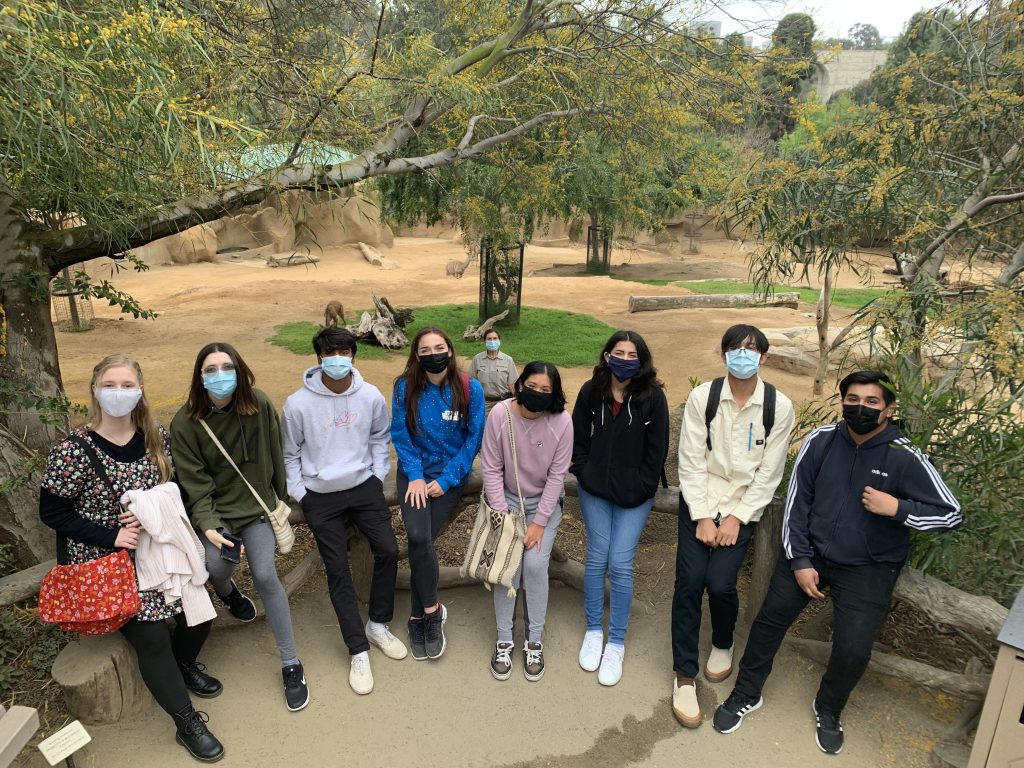
After their experience, the interns learned that being a Neonatal Assisted Care Specialist is not just about being around cute baby animals all day. It takes hard work to care for and protect these animals in unfortunate circumstances. However, the fulfilling aspects of this job outweigh the hardships and sacrifices. All in all, the interns had an educational and exciting time learning about what it takes to be a Neonatal Assisted Care Specialist.
Week Six, Spring Session 2021




